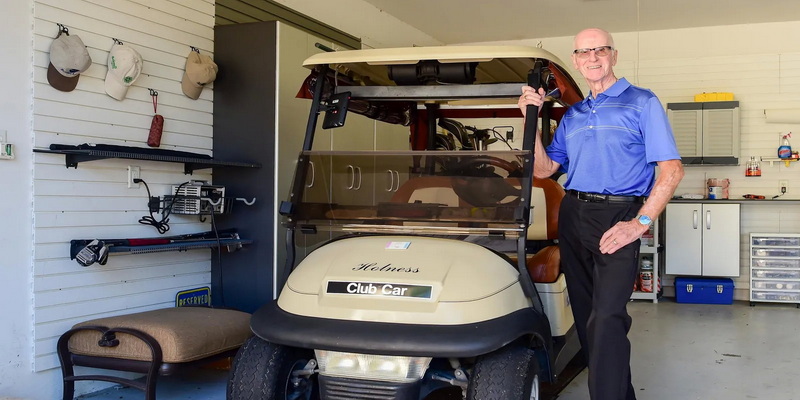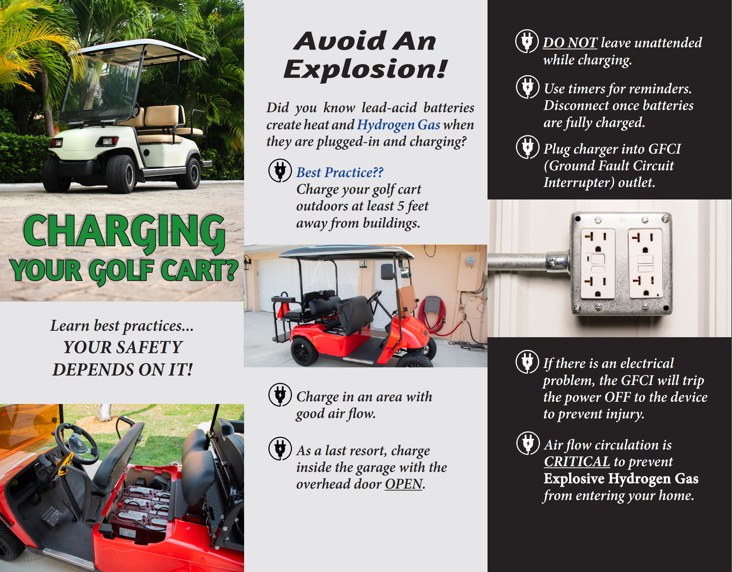Content Menu
● Understanding Battery Emissions
>> Hydrogen Gas Production
>> Other Emissions
● The Charging Process
>> Charging Procedure
>> Monitoring Gas Emissions
● Safety Measures
● Detailed Charging Techniques
>> Three-Stage Charging Method
>> Importance of Watering
● Identifying Battery Issues
>> Physical Inspection
>> Performance Testing
● Conclusion
● FAQ
>> 1. What gases are emitted when charging electric golf cart batteries?
>> 2. Why does my carbon monoxide detector go off when I charge my golf cart?
>> 3. How can I safely charge my golf cart batteries?
>> 4. What should I do if I smell rotten eggs while charging my golf cart?
>> 5. How often should I check my golf cart batteries?
Charging electric golf cart batteries is a routine task for many golf cart owners, but it comes with certain risks and emissions that need to be understood. This article explores what gases are emitted during the charging process, the implications of these emissions, and safety measures that should be taken to mitigate risks.

Understanding Battery Emissions
Electric golf carts typically use lead-acid batteries, which are known for their reliability and cost-effectiveness. However, these batteries also have specific characteristics that lead to gas emissions during charging.
Hydrogen Gas Production
When charging lead-acid batteries, a chemical reaction occurs that produces hydrogen gas. This gas is a byproduct of the electrochemical process involved in charging.
- Chemical Reaction: During charging, lead sulfate is converted back into lead dioxide and sulfuric acid. This process generates hydrogen ions, which can escape as hydrogen gas when water in the battery undergoes electrolysis.
- Hydrogen Characteristics: Hydrogen is colorless, odorless, and highly flammable. It can accumulate in poorly ventilated areas and pose an explosion risk if concentrations exceed 4% of the air volume.
Other Emissions
While hydrogen is the primary gas emitted, there are other potential emissions:
- Oxygen: Alongside hydrogen, oxygen is also released during the electrolysis of water within the battery.
- Hydrogen Sulfide: In some cases, particularly with overcharging or malfunctioning batteries, hydrogen sulfide—a toxic gas with a characteristic rotten egg smell—can be emitted. This usually indicates a problem with the battery or charging system.
The Charging Process
Understanding how to properly charge your golf cart batteries can minimize risks associated with gas emissions.
Charging Procedure
- Use the Correct Charger: Always use a charger designed specifically for your battery type. Modern chargers often include safety features that prevent overcharging.
- Charging Location: Charge your golf cart in a well-ventilated area to allow any gases produced to dissipate safely. Avoid enclosed spaces like garages unless they are adequately ventilated.
- Charging Duration: Typically, charging takes between six to eight hours. It's advisable not to leave the cart charging unattended overnight unless you are confident in your charger's automatic shut-off capabilities.

Monitoring Gas Emissions
- Carbon Monoxide Detectors: Interestingly, while lead-acid batteries do not emit carbon monoxide (CO), some modern CO detectors may trigger due to the presence of hydrogen. This can cause confusion among users who might think they are experiencing CO emissions when it's actually hydrogen triggering the alarm.
- Signs of Overcharging: If you notice bubbling or hear gurgling sounds from your batteries while charging, this may indicate overcharging and excessive gas production.
Safety Measures
To ensure safe charging practices for electric golf cart batteries:
- Ventilation: Always ensure that the area where you charge your golf cart is well-ventilated. Open windows or doors if necessary.
- Distance from Ignition Sources: Keep the charger away from any potential ignition sources such as water heaters or electrical appliances.
- Regular Maintenance: Check battery water levels regularly and ensure that terminals are clean and secure to prevent overheating and excessive gassing.
Detailed Charging Techniques
To further enhance safety and efficiency during the charging process, it's important to understand various methods of charging lead-acid batteries.
Three-Stage Charging Method
Many modern chargers utilize a three-stage method for charging lead-acid batteries:
- Bulk Charge: This initial stage applies a high current to quickly charge the battery up to about 80% capacity.
- Absorption Charge: The current decreases as the battery approaches full charge. This stage allows for complete saturation without overcharging.
- Float Charge: Once fully charged, a lower voltage is applied to maintain capacity without causing gassing or damage[6][10].
Importance of Watering
For flooded lead-acid batteries, regular watering is essential:
- Water Levels: Ensure that the electrolyte covers the lead plates but does not overflow. Overfilling can cause spillage and increase corrosion risks.
- Frequency of Watering: The frequency depends on usage; typically checked every few weeks under normal conditions[6].

Identifying Battery Issues
Recognizing signs of battery failure can prevent hazardous situations:
Physical Inspection
Regularly inspect batteries for:
- Corrosion around terminals
- Bulging or swelling cases
- Leaks or cracks in casing
Performance Testing
Use tools like hydrometers or multimeters to check:
- Specific gravity of electrolyte
- Voltage levels under load conditions
These tests can help identify weak cells that may need replacement before they fail completely[2][8].
Conclusion
Charging electric golf cart batteries involves managing various emissions, primarily hydrogen gas, which can pose safety risks if not handled properly. By following recommended safety practices—such as ensuring proper ventilation and using appropriate chargers—golf cart owners can mitigate these risks effectively while ensuring their vehicles remain operational and safe.

FAQ
1. What gases are emitted when charging electric golf cart batteries?
When charging electric golf cart batteries, primarily hydrogen gas is emitted due to electrolysis during the charging process. Oxygen may also be released alongside it.
2. Why does my carbon monoxide detector go off when I charge my golf cart?
Carbon monoxide detectors may trigger due to the presence of hydrogen gas produced during battery charging; however, lead-acid batteries do not emit carbon monoxide themselves.
3. How can I safely charge my golf cart batteries?
Charge your golf cart in a well-ventilated area away from ignition sources, use a charger designed for your battery type, and monitor for signs of overcharging such as bubbling or gurgling sounds.
4. What should I do if I smell rotten eggs while charging my golf cart?
A rotten egg smell could indicate hydrogen sulfide production due to overcharging or battery malfunction. Unplug the charger immediately and ventilate the area by opening doors and windows.
5. How often should I check my golf cart batteries?
Regular maintenance checks should be performed at least once a month or more frequently if you notice any issues such as reduced performance or unusual smells during charging.











































